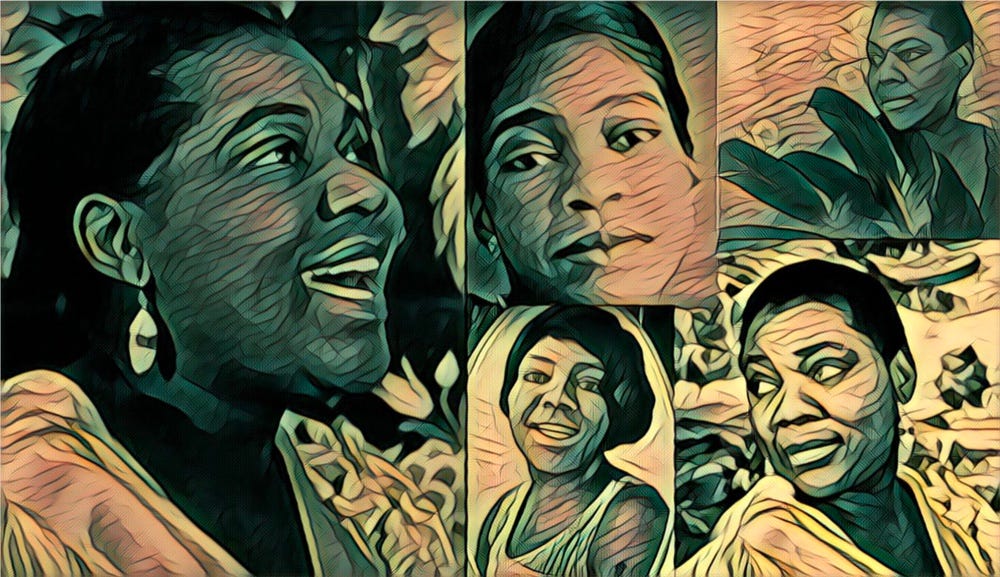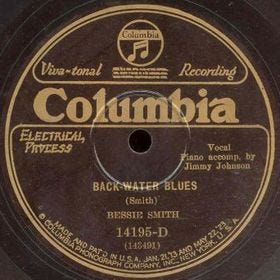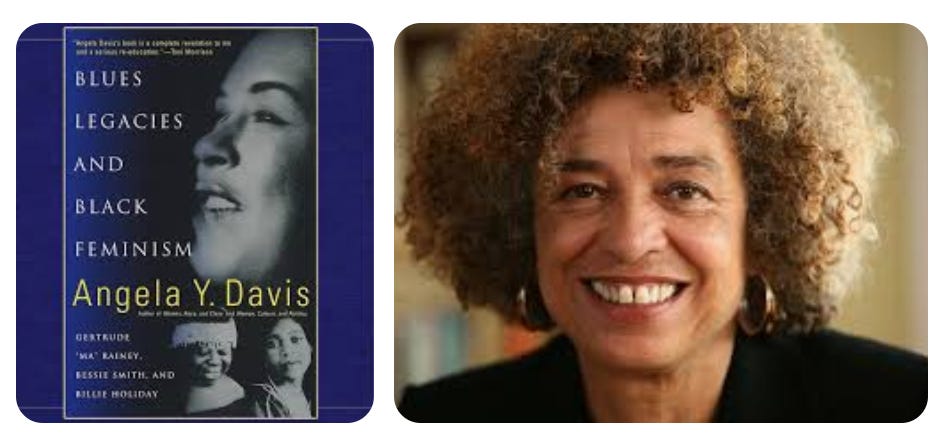People began to think Bessie Smith must be some kind of witchy woman. After all, they said, how else could she have recorded a song about the devastating Great Mississippi River Flood weeks before it even started?
The lyrics of Smith’s 1927 “Backwater Blues” certainly described perfectly the kind of misery that was being reported in the newspapers across the country that spring:
It rained five days and the sky turned dark as night
Then trouble's takin' place in the lowlands at night…
When it thunders and lightnin', and the wind begins to blow
There's thousands of people, ain't got no place to go…
Backwater blues done called me to pack my things and go
'Cause my house fell down and I can't live there no more…
To listeners, those words evoked pictures of what they were reading about. What then, other than hoodoo-y powers, could enable Smith to write and record a song about the flood and get the disc out before the rains even began to fall.
To this day, Smith’s Columbia record — with Bessie’s vocal over James P. Johnson’s stride piano — is often associated with the Great Mississippi River Flood of 1927. Some teachers even use the song in classrooms as an audio introduction to the topic of one of America’s greatest 20th century natural disasters.
But….
The fact is, though, the Columbia release of “Blackwater Blues” is one of the great coincidences in blues history. That’s because historians now know that Bessie actually wrote “Backwater Blues” about a different flood on an entirely different river.
Ninety years after the disc’s release, writer David Evans made the case in the British journal called Popular Music that Smith found inspiration for her composition on Christmas of 1926 when the Cumberland River flooded during her stay in Nashville.
“With her show cancelled, she found herself in a boarding house above an undertaker’s, crowded together with people who’d been displaced,” Evans wrote.
Angela Davis, in her 1990 book Blues Legacies and Black Feminism, also reported that story, recounting these words of Smith’s sister-in-law, Maud Smith: “There was a lot of other people there, and they were trying to get her to stay, so they started hollerin’ ‘Miss Bessie, please sing the ‘Back Water Blues,’ please sing the ‘Back Water Blues.’
” Well, Bessie didn’t know anything about any ‘Back Water Blues,’ but after we came back home … [she] came into the kitchen one day, and she had a pencil and paper, and she started singing and writing.”
The Recording
On Smith’s next visit to Columbia’s studio on Feb. 17, 1927, she recorded the new song, which the record company released in March, which just happened to be the same time the Mississippi was starting to flood, reaching record depth upriver around Cairo, Illinois.
In the weeks to come, the great river’s levees were starting to fail downstream, from Greenville down to the Gulf of Mexico. Ultimately, the swollen river would inundate an area nearly the size of Scotland across seven states. A thousand people lost their lives. Almost half a million homes were destroyed. A million people became homeless. Entire neighborhoods were wiped out.
Despite its actual origin story, Bessie Smith’s composition has become the anthem of the 1927 flood and, by extension, of other devastating natural disasters. For instance, when Katrina flooded New Orleans in 2005, many were recalling Bessie’s words:
I went and stood up on some high old lonesome hill
And looked down on the house where I used to live…
More Blues?
If this song has you hankering for a second helping, drop by the free Radio Floodango music streaming service and click into the Blues Channel.



















Share this post